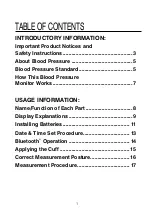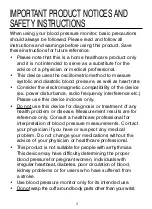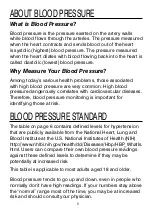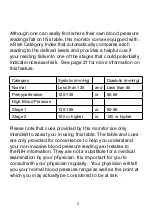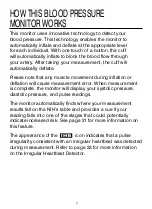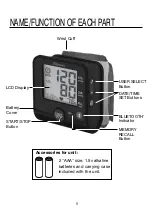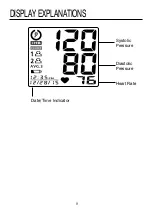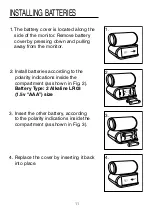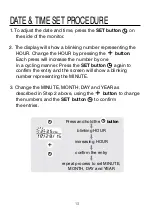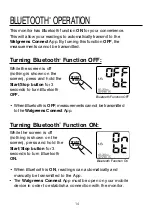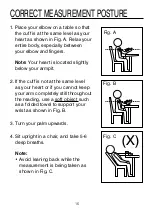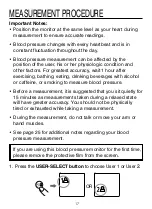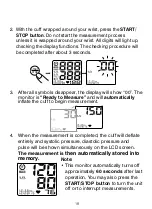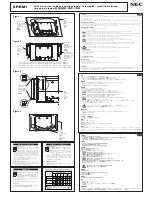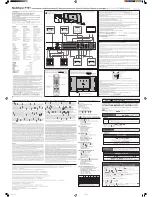
5
ABOUT BLOOD PRESSURE
What is Blood Pressure?
Blood pressure is the pressure exerted on the artery walls
while blood flows through the arteries. The pressure measured
when the heart contracts and sends blood out of the heart
is systolic (highest) blood pressure. The pressure measured
when the heart dilates with blood flowing back into the heart is
called diastolic (lowest) blood pressure.
Why Measure Your Blood Pressure?
Among today’s various health problems, those associated
with high blood pressure are very common. High blood
pressure dangerously correlates with cardiovascular diseases.
Therefore, blood pressure monitoring is important for
identifying those at risk.
BLOOD PRESSURE STANDARD
The table on page 6 contains defined levels for hypertension
that are publicly available from the National Heart, Lung and
Blood Institute at the U.S. National Institutes of Health (NIH)
http://www.nhlbi.nih.gov/health/dci/Diseases/Hbp/HBP_WhatIs.
html. Users can compare their own blood pressure readings
against these defined levels to determine if they may be
potentially at increased risk.
This table is applicable to most adults aged 18 and older.
Blood pressure tends to go up and down, even in people who
normally don’t have high readings. If your numbers stay above
the “normal” range most of the time, you may be at increased
risk and should consult your physician.


